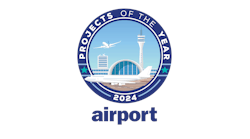Today, travelers have both the technological competence and the desire to use digital services, especially when traveling by air. Travelers want to easily find their gate with indoor navigation apps, mobile order food and beverages while they wait for their flight, and quickly connect to high-speed Wi-Fi in traveler lounges and throughout the terminal, all while wirelessly recharging their devices.
From the airline operator’s perspective, these digital services have a dual benefit. For one, they’re good for business. They enhance the passenger experience and attract more passengers to their hub. They also make airport operation more efficient and cost effective, which improves airport profitability.
New technologies and functionalities are required of your infrastructure to enable these emerging value-added digital services for airport customers. However, introducing these capabilities into existing IT infrastructure and cable networks can be difficult. There are legacy system constraints to deal with, and it’s a substantial financial investment to build and manage the infrastructure of a new, more advanced system.
By making the investment, customers will gain the superior service they have come to expect in today’s digital world, and will soon demand value-added services from airports that don’t supply it. Airport operators will gain the ability to manage entire IT infrastructure and cable networks from a single, centralized source and optimize all airport operations. The right infrastructure helps operators solve the airport’s most pressing problems, including how to:
- Quickly deliver emerging technologies in a cost-efficient manner
- Document and manage retail and consumer activities
- Bill vendors and airlines for airport service usage
These are challenges most legacy systems cannot satisfactorily address. Legacy systems often lack correct documentation and the interrelation between assets. Not only do these issues make the legacy system inadequate for today’s modern airport, but they often lack modern integration techniques and fail to meet the current and evolving needs of ICT in the airport. This is especially true regarding preparation and planning.
The best approach for introducing state-of-the-art IT services into the airport infrastructure begins with identifying the right, industry-specific solution for airports’ unique needs. Airport IT and network operations managers need their infrastructure to manage a vast array of cable networks and IT services. They need a system that provides them full control of rollout projects, operational processes and all related information. Any new solution must deliver complete visibility into every facet of the airport infrastructure to support data-driven decisions to prevent service disruption, improve work processes based on precise workplans and shorten outage times due to faster root-cause-analysis.
A standard software solution for airports should include, at a minimum, the following functional components:
Cable Infrastructure
Data cables and communications services are vital to the modern business world. To manage them effectively, total transparency and graphical documentation of nodes, trays, sections, and individual fiber-optic assignments in conjunction with service layers, is necessary. A complete cable management solution enables businesses to document, plan, and manage all the entire cable and network infrastructure in an end-to-end view both in planning and actual mode.
IT Infrastructure
Having complete insight into IT infrastructure enables airports to provision services quickly – from assets, to configuration items, to licenses, contracts, and documentation. A complete IT infrastructure management solution will optimize every interaction between networks, servers, workstations, server and software management from both a technological and business viewpoint. Additionally, integrated license management and IT automation support can reduce IT costs and improve the quality of IT services. Furthermore, the enhancement towards a complete DCIM solution provides airport businesses with full control of data center operations regarding space, power, and cooling. The ability to assess and monitor a data center in real-time improves decision making and daily processes, all while reducing unplanned downtimes.
ICT Services
Better organized service portfolio equals better IT service organization. A complete service management solution can support modeling and provisioning of service portfolios to increase the efficiency of IT activities. By providing the foundation for defining, managing, and monitoring business services and airport assets over their entire service lifecycle, you will be able to match service management perspectives with the IT infrastructure view.
The ability to provide customers with new digital services, and the ability to manage the associated infrastructure customers require, presents an opportunity to transform your airport into the hub of choice, even as pressure from competition intensifies. Providing superior service starts with gaining a clear and precise overview of your airport’s valuable IT infrastructure and cable network assets.
Sean Graham, General Manager of FNT Software’s office in Parsippany, New Jersey, is responsible for operations in North America. FNT Software is a leading provider of integrated software solutions for IT management, data center infrastructure management and telecommunication infrastructure management worldwide. FNT Software has more than 500 customers in various sectors including 8 of the 10 largest airports in Germany.






